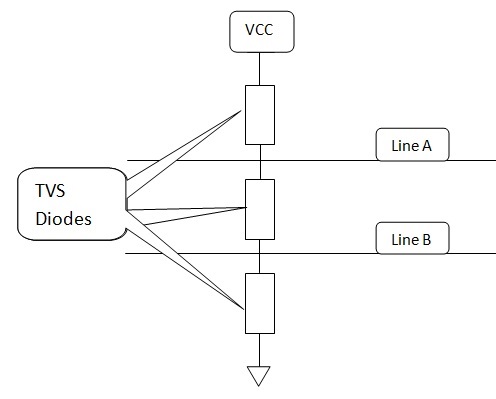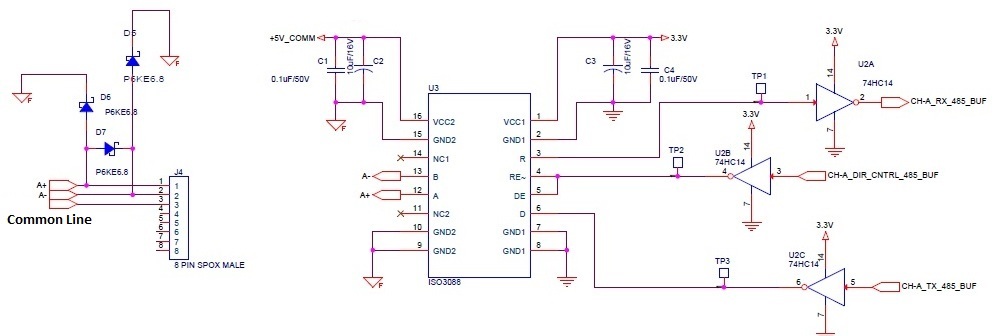Dear Sir,
We are using ISO3088 in our product and would like to have feedback on following items:
Our product will be used in the open area with medium to harsh environment.
1. Transient Protection.
2. Line Biasing.
3. No. of layers in PCB.
1. Transient Protection:
-------------------------
We are using TVS dides as shown in the attached image.

However, we are not using TBU or GDT in our design.
As per the datasheet of the ISO3088, it is already having CMTI (Common-mode transient immunity) of 25-50kV/uSec.
and ESD protection for up to 12kV.
Question: Do we need to have further protection of TBU and GDT??
2. Line Biasing:
-------------------------
AS per the data sheet ISO3088 has internal fail-safe biasing.
Question: Do we need to have external pull-up on A line and pull-down on B line??
3. No. of layers in PCB:
-------------------------
As of now our design is having 2 layer PCB.
This is board does not have any other high clocking device and the RS485 communication maximum speed is of 38kbps.
Question: Do we need to go for 4 layer board with power and ground plane of 2 layer is sufficient??
Please clarify all three questions so that we can go for production at the earliest.
Regards,
Shrivardhan BS


